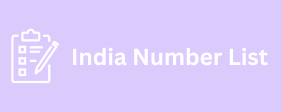In today’s globally connected marketplace. having a well-maintained and accurately formatted phone list is crucial for any business running international SMS or phone outreach campaigns. Poorly formatted or inaccurate phone data can lead to message delivery failures. increased costs. and even damage to your sender reputation. When dealing with global phone lists. the challenges multiply due to varying country codes. number lengths. and formatting standards. Proper formatting not only improves message deliverability but also helps with compliance and analytics. This guide outlines key strategies for formatting global phone lists accurately to maximize the impact of your campaigns.
Understanding International Phone Number Standards
The foundation of accurate phone list formatting lies in adhering to the E.164 numbering standard. the internationally recognized format for phone numbers. E.164 format includes:
- A plus sign (+) as a prefix.
- The country code (1–3 digits).
- The national destination code (area or operator code).
- The subscriber number.
For example. a US number formatted in E.164 would look like +1 415 555 2671. Using E.164 ensures consistency across different countries and telecom networks. reducing errors during message routing. It also enables automatic number validation and carrier identification. which is essential for compliance and cost optimization.
Common Formatting Challenges and Solutions
Global phone lists often come with inconsistent formats — some with leading zeros. others with spaces. dashes. or parentheses. These discrepancies can cause message failures or duplicate entries. Common challenges include:
- Missing country codes: Many lists include local numbers without international prefixes.
- Extra characters: Parentheses. hyphens. or spaces can confuse systems if not properly cleaned.
- Leading zeros: In some countries. local numbers start with zeros that must be removed when adding country codes.
- Duplicate numbers: Variations in formatting can cause duplicates to go unnoticed.
To address these issues. use automated phone number validation and formatting tools that clean. standardize. and deduplicate numbers. Normalize all numbers to E.164 format. strip out non-numeric characters except the leading plus sign. and validate numbers against country-specific length and prefix rules.
Best Practices for Maintaining Clean Global Phone Lists
Maintaining accuracy requires ongoing bahamas phone number list efforts beyond initial formatting. Some best practices include:
- Collect numbers in E.164 format: Wherever possible. capture phone numbers directly in international format during sign-ups or data entry.
- Implement real-time validation: Use phone number verification APIs during data capture to ensure validity and format compliance.
- Regularly clean your lists: Periodically remove invalid. inactive. or duplicate numbers using hygiene tools and feedback from delivery reports.
- Segment by region: Organize pdf seo: 6 tips to optimize them for google phone numbers by country or region to tailor messaging and comply with local regulations more effectively.
- Educate data entry teams: Train your staff or partners on the importance of collecting phone numbers in the correct format.
Conclusion: The Impact of Accurate Phone List Formatting
Accurate formatting of global phone lists is a foundational step toward successful international messaging campaigns. It reduces costs by minimizing failed sends. improves deliverability by aligning with carrier requirements. and ensures usa b2b list compliance with regional rules. Moreover. clean phone data enhances your ability to analyze campaign performance and optimize future outreach. By embracing international maintenance practices. businesses can confidently connect with audiences worldwide. In a world where communication is instant and global. well-formatted phone lists are your passport to effective. efficient. and compliant mobile marketing.
